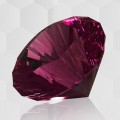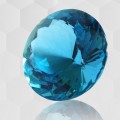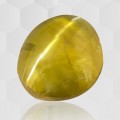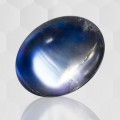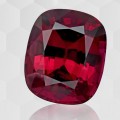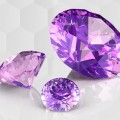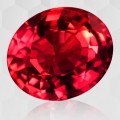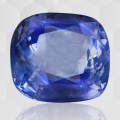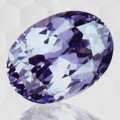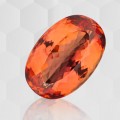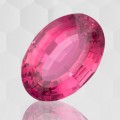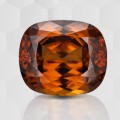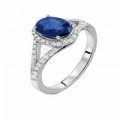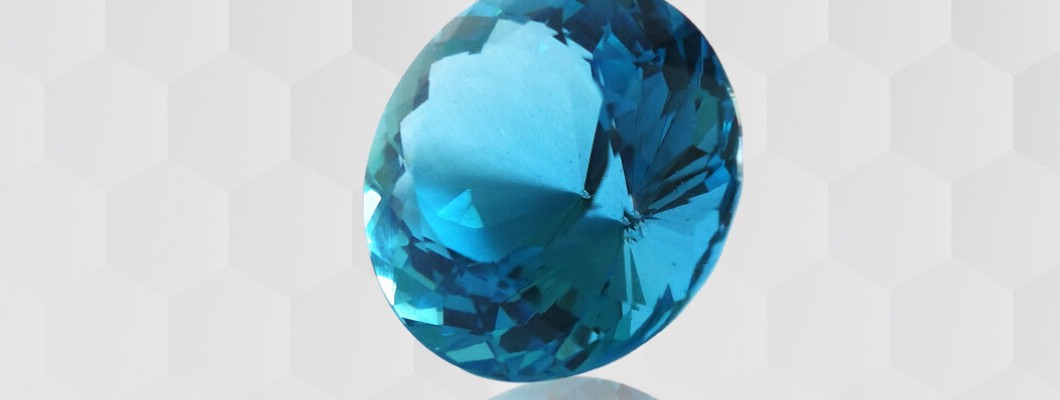
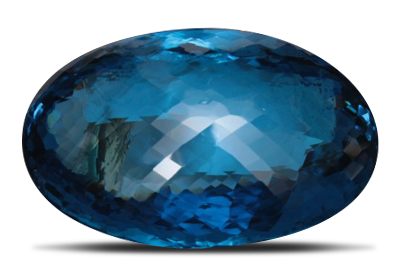
The term aquamarine is applied to the pale blue, greenish blue and yellowish blue coloured beryl. The colours are mostly pale or light, the dark shades being less abundant. Aquamarine of a flawless deep blue or greenish blue colour is undoubtedly a stone of beauty. The colours of aquamarine are attributed to the presence of ferric oxide. The different shades of colour could be due to varying percentages of colouring oxides or as sometimes suggested it could be due to varying degrees of oxidation the colouring oxide have undergone. The depth of colour is most intense in large stones. The colour in smaller stones is comparatively lighter. Generally the colours in aquamarine are very well distributed and large flawless stones are by no means rare. Small liquid and solid inclusions found in some could cause turbidity while some could be perfectly transparent. In certain instances where inclusions are properly oriented in relation to the structure of the crystal, chatoyancy or asterism could be produced as the case may be. Stones of good quality should be of deep colour and perfect transparency.
Asteriated beryl has been found in Brazil and here the asterism is said to be due to inclusions of crystal plates of ilmenite ( walter, 1961). Asteriated beryl has also been found in Sri Lanka on rare occasions. However, the inclusions that cause asterism in beryls from Sri Lanka have not yet been fully investigated. These too, could most probably be limonite.
Aquamarine has a density variable between 2.69 and 2.71 and the refractive indices lie between 1.570 – 1.575 with birefringence of 0.005. The general colour of aquamarine has been often compared to the colour of sea water giving rice to the term aquamarine.
Most aquamarine are susceptible to heat treatment in the sense that this process could enhance the prevailing colours. This fact is made use of to maximum advantage in the industry through this practice of heat treatment of aquamarine is not resorted to in this country. Certain aquamarines from certain countries however do not react favourably to heat. In comparison the Brazilian stones are very favorably susceptible to this treatment resulting in beautiful blue green material which are plentiful in the market today.
In Sri Lanka aquamarine has been found in Ratnapura, Rakwana, Morawaka, Hatton, Nawalapitiya, Galle, Matara, Tissamaharama and Lunugamvehera. The occurrence of aquamarine from Lunugamvehera which is in the South eastern sector of the country, is an ‘in situ’ occurrence of recent discovery. The stones are a beautiful blue green colour, blue being predominant; and the examined material were of sizeable chunks in the range 700-800 carats in weight and were exceptionally trance parent. The material gave the indication that these were broken off the original matrix. State intervention has now stopped this operation, as this was a dam construction sight for a major irrigation project.

